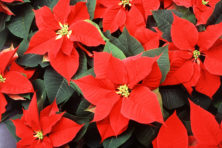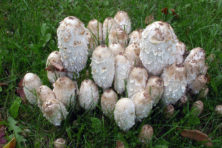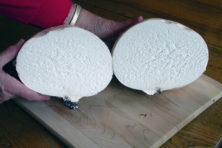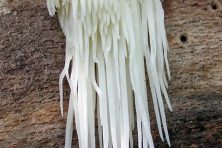Door to Nature: Poisonous Mushrooms
- Share
- Tweet
- Pin
- Share
Autumn is the best time to hike the woodland trails in pursuit of wild mushrooms. Once the growing season winds down, that’s when fungi can take advantage of their many sources of food.
Mushrooms are like the apples on trees in that they are the “fruit” of the actual plant, whose generic name is mycelium (my-SEE-lee-um). The plant often grows in places hidden from view.
But mushrooms are very different from apples in that they do not have seeds. Instead, they have microscopic spores that are released to propagate new mycelium.
The vegetative mycelium absorbs water and nutrients from decaying plant matter or from living trees and roots. It can grow in soil, under rotting leaves, inside trees, just under the bark of fallen trees, in dead insects and even in other mushrooms. When collecting wild mushrooms, it’s important to know what they’re growing on and what species of trees are within 50 feet.
Make field notes of the habitat, manner of growth and host plant before collecting mushrooms. Always clear away debris from the base of the stalk, and dig down to get the entire mushroom out of the ground. Don’t just break off the top, leaving the base of the stalk in the ground.
Look around to see whether the same mushroom is growing nearby, and try to collect young ones as well as mature, fruiting bodies. You want to have as much information as possible to help you identify the collection in field guides.
Always keep each species separate from others, clean the soil from the fungus and place it in a waxed paper bag, folding over the top and labeling it to match the notes you’ve made about the habitat.
The odor of a mushroom can help in the identification. When you’re at home, open the waxed bag and smell the mushroom inside. Enclosing it in a bag concentrates the odor and may make it easier to determine.
A recent hike in a Northern Door preserve with some friends provided the opportunity to study one of the deadliest mushrooms known to humans. It was pure white, with a smooth cap, and it grew on soil in an area of mixed hardwoods and conifers.
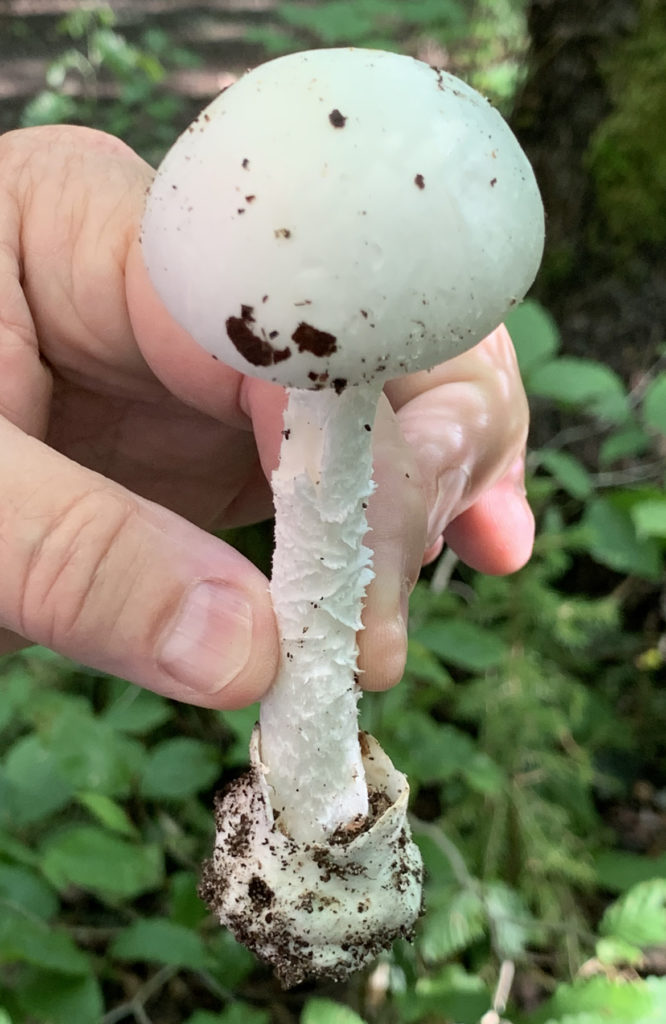
This deadly white Amanita (Amanita bisporigera) has been seen, according to my records, in 10 Door County parks and preserves from Rock Island to the Door County Land Trust canal property. I’ve seen it from 1979 through this year and have noted that it grows from mid-August to mid-October.
It has toxins that gradually eat away a human liver during a five-to-10-day period – a very painful process that ends in death. In fact, the common name for this mushroom is the “destroying angel.”
This pure-white mushroom grows in the soil, usually hiding its “death cup” at its base, out of view. The cap can be up to nine centimeters (three and a half inches) wide, and the stalk can grow to 15 centimeters (six inches). Most good fungi field guides use the metric system for measuring mushrooms.
Many common mushroom poisonings are by gastrointestinal means. People eat the mushroom and often vomit within two hours. The toxins in the deadly white Amanita, however, do not cause any symptoms for five to 10 hours, and by then, most people do not associate their illness with the mushroom they ate.
There are other toxic species in our area that are worth knowing about and avoiding if you wish to eat wild mushrooms. The amatoxins can be found in a few other species of the Galerina and Lepiota genera. False morels contain gyromitrin toxins, which may also have symptoms that are delayed for four to six hours, including stomach cramps, vomiting, diarrhea and headache. It can affect people differently, and in severe cases, it causes jaundice, convulsions and coma, followed by death.
The fairly common inky cap group has edible and poisonous species. The shaggy mane is eaten frequently when thoroughly cooked, but avoid the smooth ink cap if you drink any alcohol within three days of eating it. That one contains the toxin coprine, and when consumed with alcohol, it causes dilation of the blood vessels, resulting in redness and flushing of the face and upper body. Coprine is similar to Antabuse, which is given to those who are recovering from alcoholism.
Collecting wild mushrooms to eat must be done with great care and study. Get a great field guide for your area, and read the introduction. Learn which mushrooms are poisonous in your community, research how to collect them properly and be observant of many features of the species.
Never eat any mushrooms raw. Always cook them thoroughly before consuming them, and always keep one whole wild mushroom in a waxed bag in the refrigerator as a sample to take to the emergency room in case you become ill.
Most poisonings result from ignorance and carelessness. If in doubt, throw it out!

